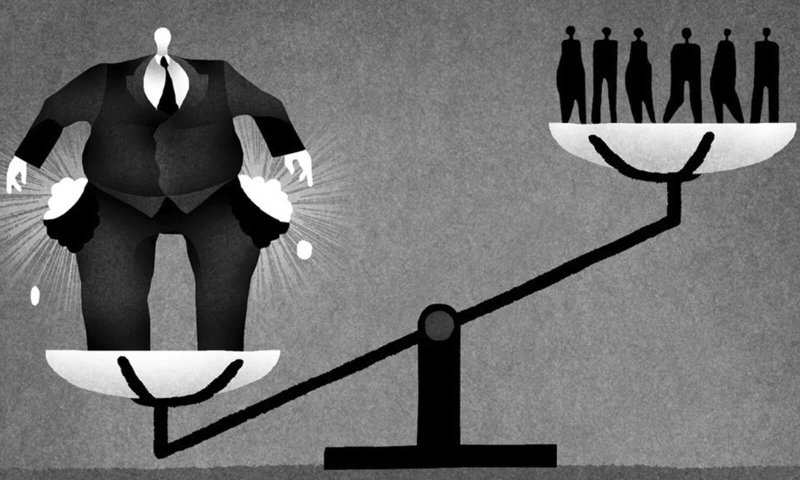A group of researchers from The Netherlands, UK, and Australia recently confirmed the existence of genetic variants underlying socioeconomic differences between various regions in Great Britain. The researchers analyzed over 450,000 individuals and found uneven geographic clustering of alleles associated with educational attainment and certain physical and mental health outcomes. After controlling for ancestry, sex and age, Abdel Abdellaoui of the University of Amsterdam et al. found that out of the 33 complex human traits that they examined, 21 traits showed “significant geographic clustering at the genetic level.”

This genetic divide, they contend, is likely an effect of relatively recent socioeconomic-driven migration. Many people nowadays move to different locations in pursuit of education and work opportunities, and it wasn’t all that different during the domestic migrations of the Industrial Revolution. During the late 19th and early 20th centuries, laborers and farmers left rural areas to work in new industrial jobs that were highly clustered in particular areas. Now, at least in the UK, large numbers of individuals with genetic predispositions associated with higher educational attainment are moving away from several of these locales, resulting in a kind of “brain drain” and fueling social inequality.
The seekers and the places they leave behind
While this kind of mobility is typically beneficial to education and career seekers who move to different locations that are better suited to their interests and goals, it does not benefit the places that they leave behind. Many of the left-behind locations do not have the resources or infrastructure to offer advanced education and better job opportunities, and the brain drain scenario only makes matters worse. The result is an ever-increasing divide between low socioeconomic status (SES) communities and high SES communities, with the high SES communities continuing to benefit from a sustained population flow.
“SES is generally based on occupation, income and EA [educational attainment], which are influenced by many environmental and genetic factors, and are associated with a wide range of physical and mental health outcomes,” the researchers said. The seekers end up having better educations, which lead to higher-paying occupations. These better financial outcomes also tend to lead to better health and mental health outcomes, perhaps due to increased access to health services, resources, and education.
The traits that the researchers examined could be sorted into broader categories of SES, physical health (which included body composition, cardiovascular disease and diabetes rates, and reproduction), and mental health outcomes (which included psychiatric diseases, substance use, and personality measures). Educational attainment, which falls under the SES category, showed the strongest geographic clustering. Linked clustering patterns were observed in traits such as body and personality dimensions and substance use, likely driven by an overlap of shared genes for these traits.
“Alleles associated with educational attainment (EA) showed the most clustering, with EA-decreasing alleles clustering in lower SES areas such as coal mining areas where economic deprivation is widespread. Individuals who leave coal mining areas carry more EA-increasing alleles on average,” the researchers said.
In an article for The Scientist about the study, first author Abdel Abdellaoui, along with Judy Luigjes, said that it’s not yet clear how exactly these EA-increasing alleles are linked to educational attainment in a causal fashion. It could be due to “biological processes that influence traits such as intelligence, perseverance and industriousness, but also partly because genes that are linked to a higher education are more common in children born to parents with a higher education,” they wrote.
Indeed, there is a kind of “double dose” of benefits that parents with EA-increasing alleles pass on to their children. Not only are their children likely to inherit the EA-increasing alleles, but they also benefit from more enriching learning environments and opportunities that their EA-increasing parents tend to (or are able to) provide. In this way, socioeconomic inequalities arise from and are sustained by genetic and environmental interactions.
Genetic Diversity is Key
Abdellaoui and Luigjes also said that while an improved education system and increased social mobility has led to greater freedom and opportunities, the continual migration of education and career seekers (in other words, those with EA-increasing alleles) has had unintended negative consequences with which communities now need to grapple. The research indicates that these consequences are felt most by those who do not have the EA-increasing alleles.
While solutions to this issue have not yet been formulated, the researchers suggested that one of the first goals for governments and other stakeholders is enriching and developing the locations that are experiencing large numbers of departing inhabitants. Building new universities, attracting businesses and start-ups, and the development of other such initiatives may be key to keeping the seekers interested in their own hometowns while also attracting a diverse array of new inhabitants.
Kristen Hovet covers genetics, medical innovations, and the intersection of sociology and culture. Follow her on her website or Twitter @kristenhovet































